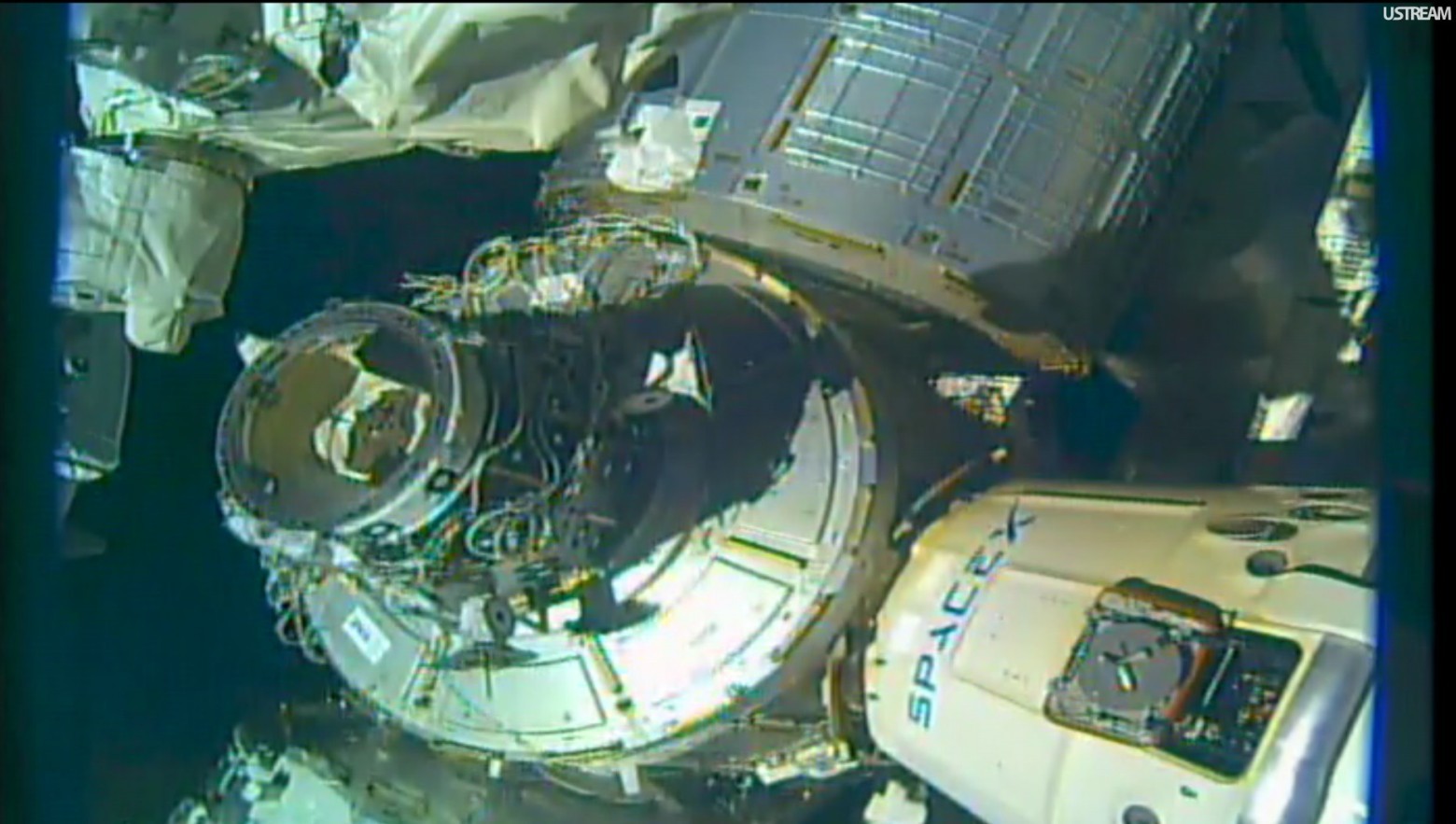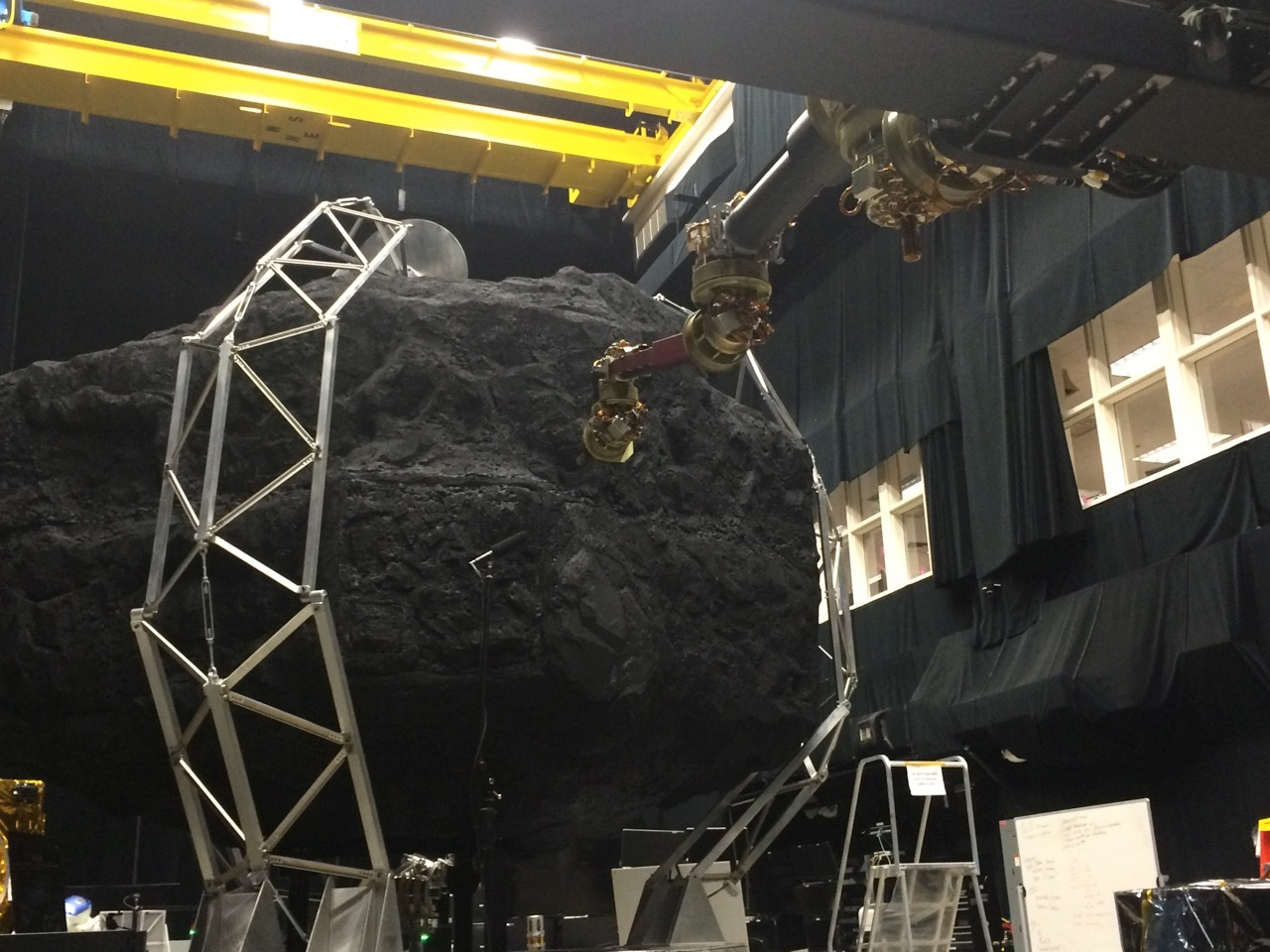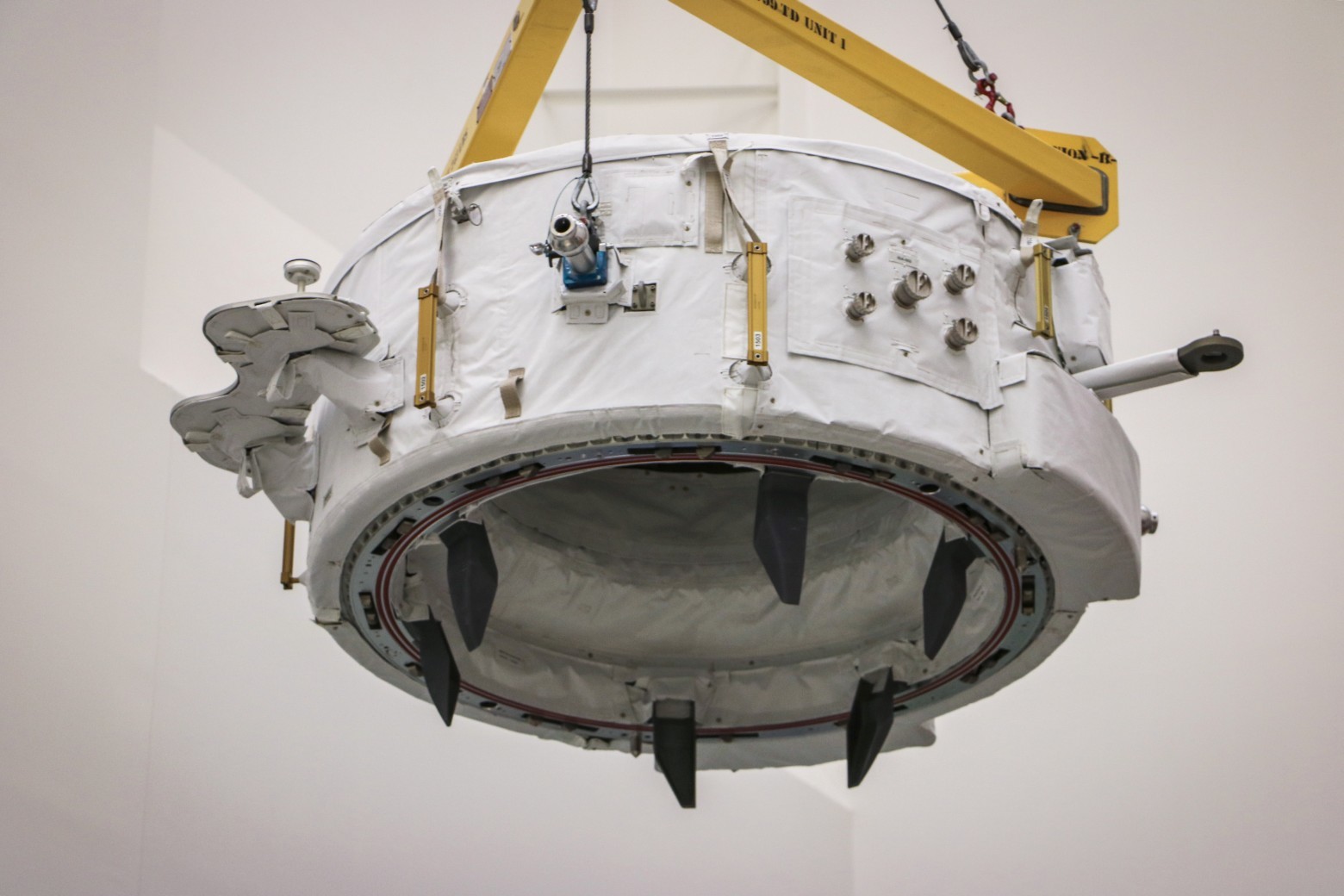NASA has allowed private companies to attach modules to the ISS

Installing the IDA-2 docking adapter on the ISS in August 2016. It will allow private ships with the ISS interface (International Standard Docking System) to dock with the APAS mechanism (Androgynous-peripheral docking unit) on the ISS
In preparation for the Martian mission, a lot of work is needed on testing residential modules for astronauts , testing radiation protection systems from cosmic rays and other systems . Two months ago, NASA selected six private companies to develop prototype residential modules in deep space. These developments must be prepared for a mission with the landing of astronauts on Mars , which is scheduled for the 2030s.
Of course, to fully test the modules you need to test them in space. The easiest way to do this on the International Space Station. As is known, the lifetime of the 17-year-old station is coming to an end. Initially it was assumed that the station will be operated until 2015, but then the life was extended until 2024.
It is known that in the future, the United States is going to partially transfer the station to operation by private companies. Now NASA's intentions are a little more clear. Yesterday, the head of NASA, Charles Bolden (Charles Bolden), spoke about the progress in promoting the two initiatives of the space agency to help private space companies:
')
- Creation of residential modules for the Martian mission;
- Using private companies docking adapter on the ISS.
Creation of residential modules for the Martian mission
The main goal of NASA for the coming decades is the Mars mission.
As part of the Next Space Technologies for Exploration Partnerships-2 (NextSTEP-2) public-private partnership program, each of the six private companies identified for developing residential modules will be able to test their developments on the ISS. Recall that the American companies Bigelow Aerospace, Boeing, Lockheed Martin, Orbital ATK, Sierra Nevada’s Space Systems of Louisville and NanoRacks are going to participate in the testing.
At the first stage (NASA calls it "Earth Dependent") these technologies will be tested on the ISS, and at the second stage "Proving Ground" - in lunar orbit, that is, at a relative distance from the Earth. This program includes the Asteroid Redirect mission planned for the mid-2020s, within which it is planned to send an unmanned spacecraft to an asteroid flying past, and then deliver it in whole or its fragment to the lunar orbit for study. In addition to the chance to extract useful minerals, during the mission some important technologies will be tested. Probably, they will test the electric power unit HERMeS (Hall Effect Rocket with Magnetic Shielding) .

Preparing for the Asteroid Redirect mission in the Robotics Operations Center of the Center for Space Flight named after Goddard NASA. Photo: NASA
According to NASA, the astronauts residential module should be a sealed compartment with an integrated set of integrated systems and components, including docking function, climate control system, life support system, logistics management system, radiation protection and monitoring system, fire safety technology and maintaining crew health.
Each of the six companies has up to 24 months to produce a fully functional ground prototype and / or conduct a thorough study of the home in deep space.
NASA will allocate $ 65 million to six companies for design and engineering work over the next two years, with the possibility of additional funding in 2018. Each company must cover at least 30% of the cost of the work at its own expense.
Using private companies docking adapter on the ISS
Recently, NASA asked private companies to ask if there are any suggestions for using the existing docking adapter on the ISS. For example, one of the possible options is to work on one or more future commercial space stations in near-earth orbit, which will replace the ISS after the end of its service life in 2024.
Private sector representatives responded enthusiastically to this proposal, which demonstrates great commercial enthusiasm among American entrepreneurs, Bolden noted with satisfaction. He explained that NASA, on the instructions of the president, is actively stimulating the development of private space companies, of which there are already over a thousand in the United States.
So, in the fall of 2016, NASA begins the process of providing companies with the potential to attach their own modules and other equipment to the ISS . Thus, commercial modules will complement the current 15 American, Russian and Japanese modules that make up the ISS.
The ISS has three pressure adapters for interconnecting the modules of the station and spacecraft with different docking mechanisms. The first one constantly connects the Zarya and Unity modules. The second one is installed on the front port of the Harmony module (in July 2016, the IDA-2 docking adapter was delivered for it to the ISS). The third one is installed on the left port of the “Tranquility” module - it is also planned to make a docking adapter for it instead of the IDA-1 that exploded along with the Dragon cargo ship during the unsuccessful flight of SpaceX CRS-7 in June 2015.

Docking adapter IDA-2
According to the Intergovernmental Agreement on the Space Station , signed in 1998, NASA is the designated operator of the ISS.
There are still seven years left until the end of the life cycle of the ISS. It is not yet clear what plans for the station’s operation are available for the other 14 participants in the international project: these are Russia, Japan, Canada and Belgium, Germany, Denmark, Spain, Italy, the Netherlands, Norway, France, Switzerland and Sweden, which are members of the European Space Agency.
Source: https://habr.com/ru/post/398185/
All Articles